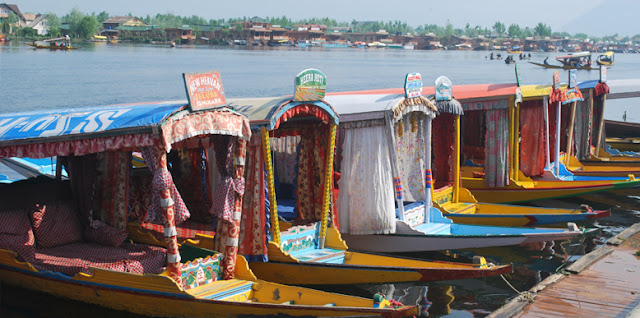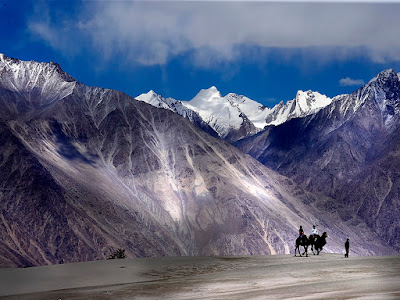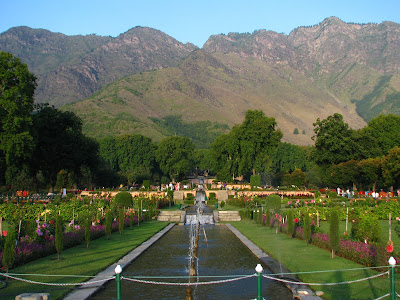ONE OF THE BEST PLACE IN HEAVEN
ON EARTH
LEH LADAKH
TSO MORIRI






ON EARTH
LEH LADAKH
TSO MORIRI
This journey starts with a drive to Rumtse around 85 km from Leh near the Gya village, which was the seat of power of the Head of Ladakh Gazpacho in the 10th century AD. It crosses three passes before Tsokar Lake and another three passes after Tsokar the salt Lake. While trekking in this area, you can visit birds, wild animals and Changpa nomads grazing their herds of goats in the mountains and high passes. The midpoint of the trek is Tsomoriri Lake or Korzok, the head quarter of Nomadic people. Explore Tsomoriri Lake for a day and trek further to Kibber via Parang La.
This is a unique trek across the Rupshu region in south-east Ladakh- it is a starkly beautiful region of high-altitude arid plains, gentle mountain ranges and salt-water lakes, such as Tso Kar and Tso Moriri, with the only inhabitants being pastoral nomads. We will spend seven days crossing this region while going over a number of high passes before reaching the salt-water lake of Tso Moriri.
The combination of a cultural exploration of the rich Buddhist culture of Ladakh and a challenging trek in the high desert plateau makes this a distinctive Himalayan journey.
Tso Moriri or Lake Moriri Tibetan lha mo blah mtsho), is a lake in the Ladakhi part of the Changthang Plateau (literally: northern plains) in Jammu and Kashmir in northern India. The lake is at an altitude of 4,522 m (14,836 ft). It is the largest of the high altitude lakes entirely within India and entirely within Ladakh in this Trans-Himalayan biogeographic region. The official name of the land and water reserve here is the Tso Moriri Wetland Conservation Reserve.
The lake is fed by springs and snowmelt from neighboring mountains. Most water enters the lake in two major stream systems, one entering the lake from the north, the other from the southwest. Both stream systems include extensive marshes where they enter the lake. It formerly had an outlet to the south, but this has become blocked and the lake has become an endorheic lake. The lake is oligotrophic in nature, and its waters are alkaline.
Accessibility to the lake is largely limited to the summer season though Karzok on the northwest shore and the military facilities on the eastern shores have year-round habitation.

(i) Glacial lakes which are formed in and around glaciers; (ii) Structural lakes, formed by folds or faults due to movements in earth’s crust (e.g. Nainital lake in Uttarakhand), (iii) Remnant lakes which were originally structural but represent the remnants of vast lakes (e.g., Tso Moriri, Tso Kar, Pangong Tso in Ladakh, and Dal Lake in Kashmir), (iv) Natural dammed lakes i.e., temporary water bodies formed along the river courses due to deposition of rocks or debris e.g. Gohna Tal in Garhwal, Uttarakhand.

The Changthang Plateau in the eastern Ladakh represents a landscape of low productive ecosystems which protects unique floral and faunal species. The area is an extension of the western Tibetan plateau that lies above 4,500 m (14,800 ft) MSL and supports diverse but low populations of several globally threatened mammals.The lake's basin could also be categorised as a basin since it is a closed drainage basin that retains water and allows no outflow to other bodies of water such as rivers or oceans.

The old Shey palace of the Ladakh built in 550 years ago by the first king Lhachan Splagyion of Ladakh and the palace has largest golden Buddha statue in Ladakh, the statue worked out of gold and the gilded copper sheet was built in the 17th century. From the palace, you can have a look over the fertile Indus plain and the Indus to Zanskar mountain range.
Thiksay monastery is the oldest monastery of Gelugpa School in Ladakh on the prophecy of great Lama Tsongkhapa the founder of Gylukpa school his disciples great Lama Sharp Zangpo of stod and his nephew Paldan Sharap built the monastery on the bank of Indus river in the 14th century and this monastery is as beautiful as comparison to Potala palace and it is known as mini Potala. In 1980, the giant statue of future Buddha was erected and the monastery has largest contingents of monks in Ladakh.
Hemis monastery is located in the hidden mountain of Stok range, Hemis monastery is the school of Drukpa of Tibetan Buddhism was founded by the first reincarnation of Lama Stakstang Raspa from Tibet in 16th century with the support of Ladakh King Sengay Namgail. The festival of this monastery is very popular which held in summer.


Tso Moriri Lake, Korzok, in Ladakh.
The lake is 20 to 50 kilometers southeast of the elevated valley of the core Rupshu Valley and falls within the greater Rupshu Plateau and valley area. The lake is ringed by hills rising over 6,000 m (20,000 ft). “Changpas", the nomadic migratory shepherds (pastoral community) of yak, sheep, goat, and horses of Tibetan origin and who are engaged in trade and work on caravans in Ladakh region, are the main inhabitants of the area. Changpa (Champa) herders use the land of this valley as grazing ground and for cultivation.
The Working Report (2006) of the Planning Commission of the Government of India also reports:
Despite a poor vegetation cover, relatively low standing biomass and high anthropogenic pressure, this area sustains a considerably high livestock population. The steady increase in the livestock population in the area is mainly attributed to an influx of nomadic herders from Tibet during recent decades and promotion of Pashmina goat production by the Animal Husbandry Department (AHD) for fine quality under wool (Pashmina). The herders and AHD officials, in recent years, have begun to raise concern over degradation of pastures, resultant shortage of forage, and mass mortality of livestock during severe winters.

The Korzok Monastery, on the western bank of the lake, is 400 years old and attracts tourists and Buddhist pilgrims. Tourism during May – September attracts a large number of foreign and local tourists even though tented accommodation is the facility available, apart from a small PWD guest house close to the Lake.[2] Northeast of Tso Moriri is a small lake which is known locally as Lake of Joy.













































